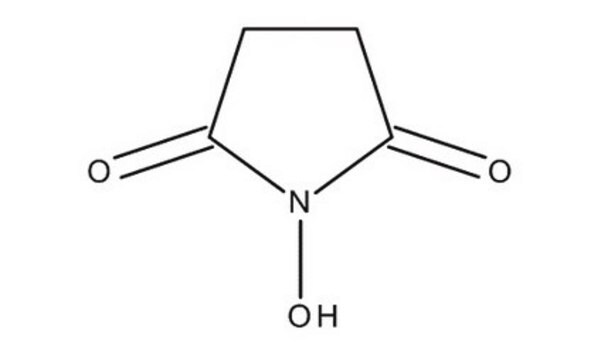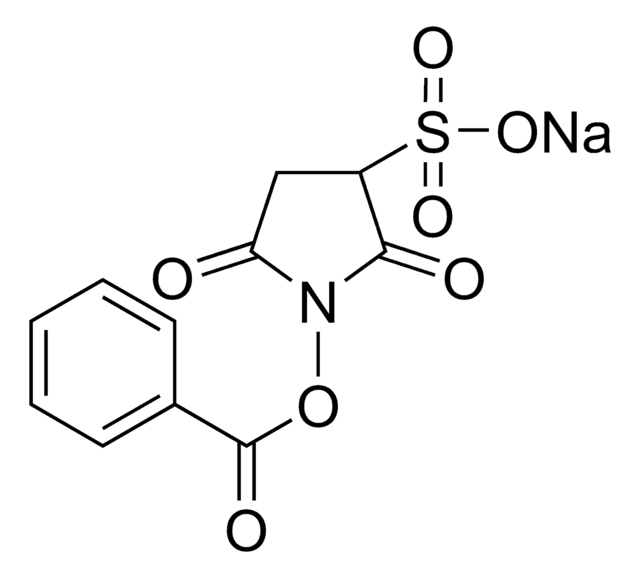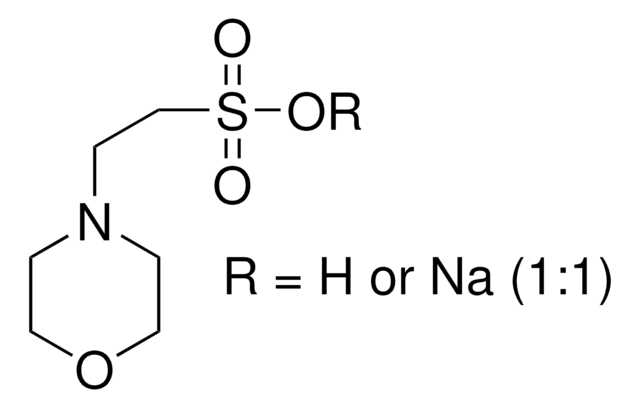Wichtige Dokumente
56485
N-Hydroxysulfosuccinimid Natriumsalz
≥98% (HPLC), for peptide synthesis
Synonym(e):
Hydroxy-2,5-dioxopyrrolidin-3-sulfonsäure Natriumsalz, Sulfo-NHS
About This Item
Empfohlene Produkte
Produktbezeichnung
N-Hydroxysulfosuccinimid Natriumsalz, ≥98% (HPLC)
Qualitätsniveau
Assay
≥98% (HPLC)
Form
powder
Zusammensetzung
carbon, 21.57-22.68 (anhydrous)
nitrogen, 6.28-6.61 (anhydrous)
Eignung der Reaktion
reaction type: Addition Reactions
Verunreinigungen
≤4% water
Anwendung(en)
peptide synthesis
Funktionelle Gruppe
imide
sulfonic acid
SMILES String
[Na+].ON1C(=O)CC(C1=O)S([O-])(=O)=O
InChI
1S/C4H5NO6S.Na/c6-3-1-2(12(9,10)11)4(7)5(3)8;/h2,8H,1H2,(H,9,10,11);/q;+1/p-1
InChIKey
RPENMORRBUTCPR-UHFFFAOYSA-M
Suchen Sie nach ähnlichen Produkten? Aufrufen Leitfaden zum Produktvergleich
Anwendung
Verpackung
Sonstige Hinweise
Lagerklassenschlüssel
11 - Combustible Solids
WGK
WGK 3
Flammpunkt (°F)
Not applicable
Flammpunkt (°C)
Not applicable
Persönliche Schutzausrüstung
Eyeshields, Gloves, type N95 (US)
Hier finden Sie alle aktuellen Versionen:
Besitzen Sie dieses Produkt bereits?
In der Dokumentenbibliothek finden Sie die Dokumentation zu den Produkten, die Sie kürzlich erworben haben.
Kunden haben sich ebenfalls angesehen
Artikel
Collagen molecules play a critical role in tissue architecture and strength, and in cell-matrix interactions as insoluble ligands to regulate the diverse phenotypic activities of cells.
Unser Team von Wissenschaftlern verfügt über Erfahrung in allen Forschungsbereichen einschließlich Life Science, Materialwissenschaften, chemischer Synthese, Chromatographie, Analytik und vielen mehr..
Setzen Sie sich mit dem technischen Dienst in Verbindung.






![1-[3-(Dimethylamino)propyl]-3-ethylcarbodiimidmethiodid](/deepweb/assets/sigmaaldrich/product/structures/414/134/4eb9c126-d7f9-4e12-9e3a-95cb077824fd/640/4eb9c126-d7f9-4e12-9e3a-95cb077824fd.png)
